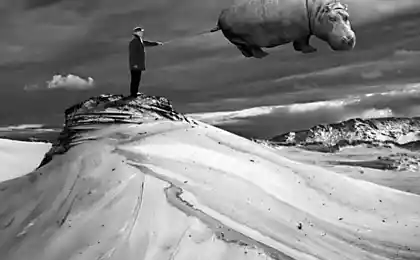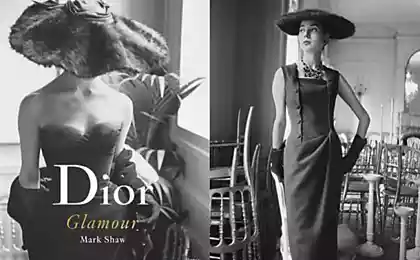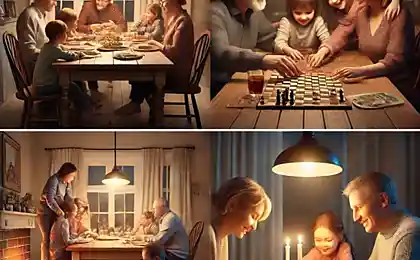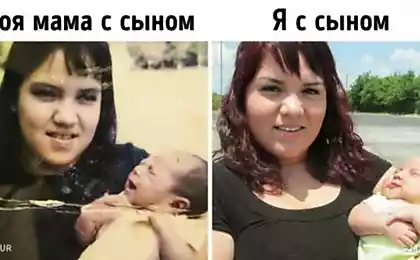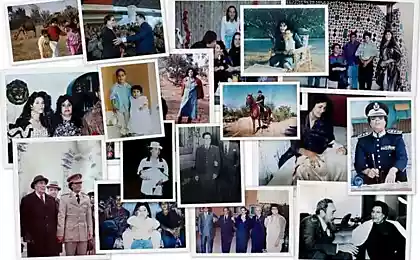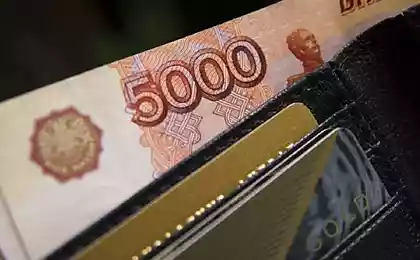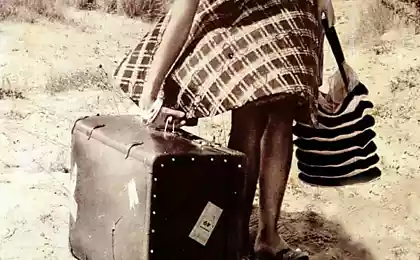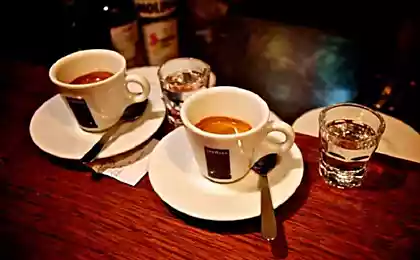1318
Family Albums 30s - 50 g
History of the USSR from the family album 30s - 50s
This is not the work of professional photographers who can try to blame the fact that they are one-sided. These are photos from private albums - real life who lived ordinary Soviet people, the average 20-x - 50-ies.
What is not expected? In order to "terrible Stalinist Soviet Union, where there was no sex" in Moscow exhibited a sculpture of a naked woman beautiful? Yes, indeed, she stood "in the terrible 37th." If you think what everyone lived in terror under the total control of sanctimonious tyrannical state, that does not represent and do not understand the time - it has almost nothing to do with his predstavlet rossiyanskih TV and scribble all sorts of scum. Of course, the pictures of the album can not be compared with the level of works of professional photographers, most of them were made by amateurs. But they reflect life as they saw it and those people were able to save part in family photographs.
Behind the scenes there are very many. For example, the campaign against illiteracy which was taught to read and write 80% of the illiterate population of the country - where the peasants of those years Cameras? But it's not that. Look at what surrounds those years the Soviet people, clothes, face, reflecting his time. Sometimes they will say about his time better than any of historians, educators and analysts.
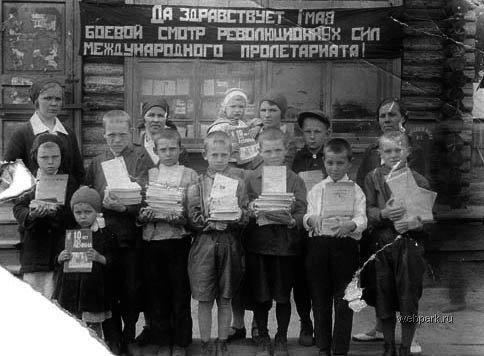
Kids mid-20s
School textbooks - the first time in my life. Education for all the world's first furnished the Soviet regime.
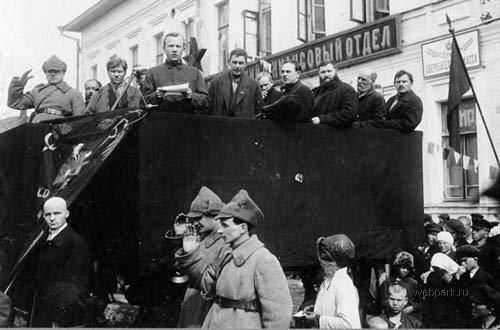
1926 Cherepovets. The celebration of May 1
Next to the podium homeless - Civil consequences. Homelessness is eliminated only to the beginning of the 30's.
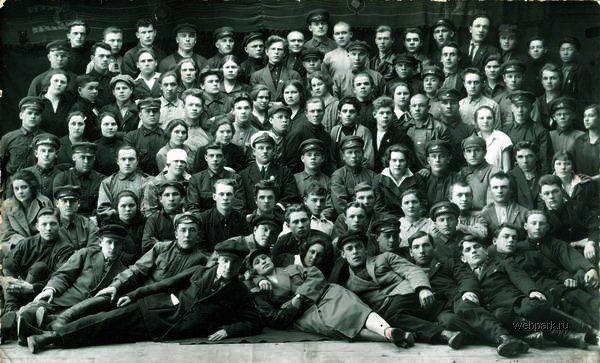
1928. Krasnoyarsk region. The Congress party workers.
See how dressed up party workers - as well as the average person mes years. In the 20's costume was not all. And ordinary party workers had 2 shirt wardrobe, and even one.
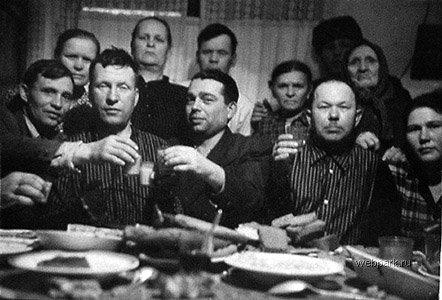
Family celebrations, 20-30th

Photo of a woman. 1930 Moscow

The car on the wood (!) Motor Rally 1931
Enthusiasts konstrutory-30s. With oil in the Soviet Union when it was not very good - almost all the proven reserves were concentrated in the Caucasus. The oil fields of Tatarstan and Siberia were discovered only in the 40's - 50's, when it created the basis for geological surveys. Before that, the country lacked geologists, equipment, engineers, transportation ... there was almost nothing. All this was created in the 30s.
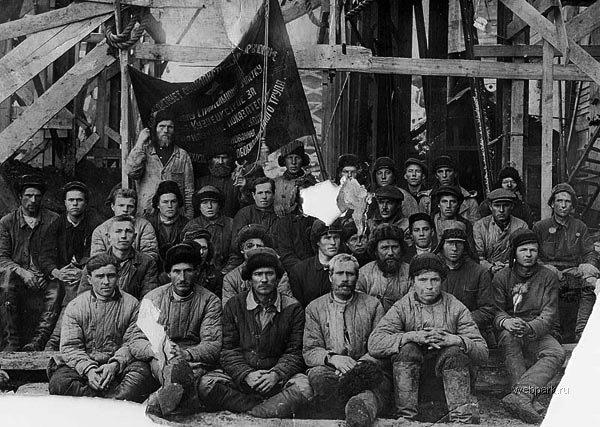
1931 Best team in the construction of the Kuznetsk metaluricheskogo plant, Novokuznetsk
Mortgaging base of heavy industry. And there is no lie that its "cons built in 37" - it has already been built a long time by then, and the contribution of prison labor in the economy in those years is less than 1%.
Now this plant "privatized", that is stolen from the people of obscure personalities. Recently, "Governor" Tuleyev said that the plant "finally appeared boss" - a group of obscure nominees. Now combine Finally, you can control with a host. It is terrible to imagine how it could build if no owner, is not something that control.
To do this, that, if it was built by our grandfathers to be stolen every scum?
Look no faces of these people. They did not spare himself, built factories and cities for their descendants, for us. After 10 years, they have made will protect them in the most terrible war in human history, dying in order to live we. And we are all allowed to steal and destroy. Could we look into their eyes?
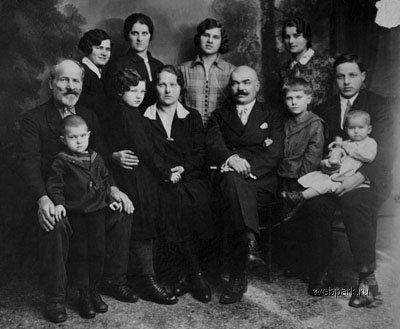
A family. Leningrad 1930-31g.
Intellectuals and experts in those years very well earned.
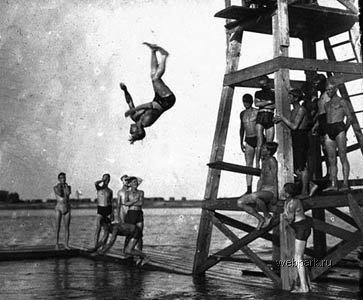
Rest on the water. Kirov region. 1932 - 1936
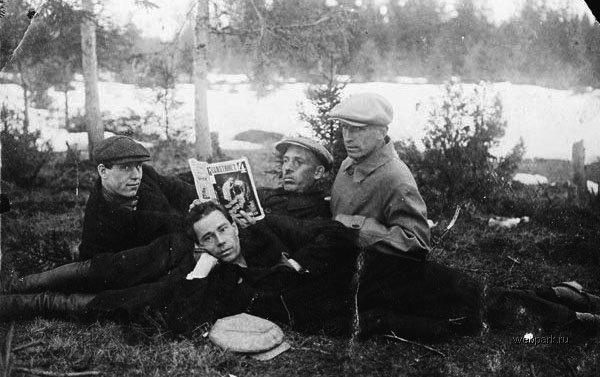
Agricultural workers remote Siberian province. Artel - a non-governmental organization, united and cooperative entrepreneurs who themselves entered into a contract with the state and other cooperatives, paying taxes, etc.
The one that says that the Soviet Union in those years was a super-centralized state, where everything is strictly regulated from the center - do not know the history or understand the structure of society of those years, or deliberately lying.
The cooperative movement was extremely developed in Stalin's Soviet Union. In addition to the collective farms, which have been co-operative organizations, while there were more than 114 000 industrial workshops, where about 2 million people. They made almost 6% of the gross industrial output of the Soviet Union in its composition: 40% of all furniture of the country, 70% of all metal utensils, 35% of the top jersey, almost 100% of the toys.
In rural cooperatives cooperative workers (both farmers and individual farmers) were usually employed part. They included the 30 years up to 30 million people.
The cooperative movement in the Soviet Union was destroyed during Khrushchev simultaneously with the deployment of anti-Stalin hysteria.
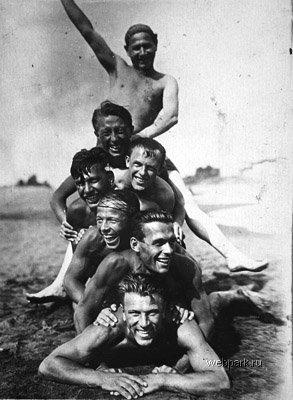
"After the Bath" Mid-30s.
"Scared the Soviet people. »© Look, is there any fear in these faces? In any of the photographs. Open, bright and optimistic person.
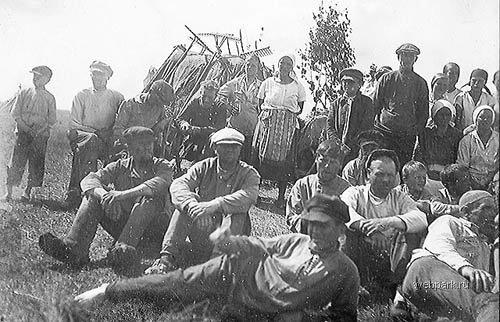
Farmers. Kirov region between 1932 and 1936
Ordinary Soviet farmers haymaking.
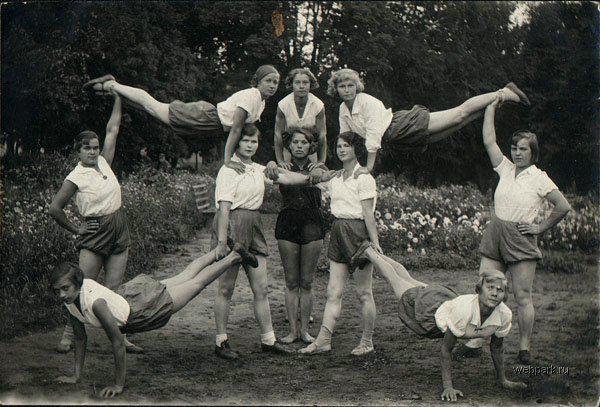
1935 Orel region, Holiday House "Bogdanovsky».
The whole country is involved in sports. This is a Soviet girl, not the national team in gymnastics. Try to repeat what they are doing.
1935, for ordinary people across the country opened a holiday home. Can you imagine it with the king and the "great Stolypin»?
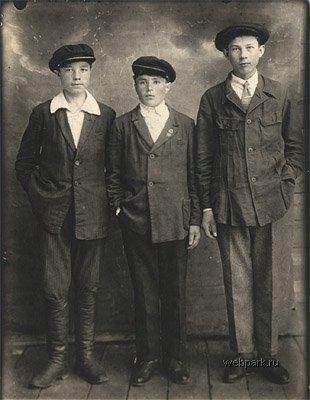
Students pedtehnikuma, 1935, Kirov region
The shape of the disciples betrayed the Soviet state. It is a country that a few years ago went to sandals and did not know how to read and write.
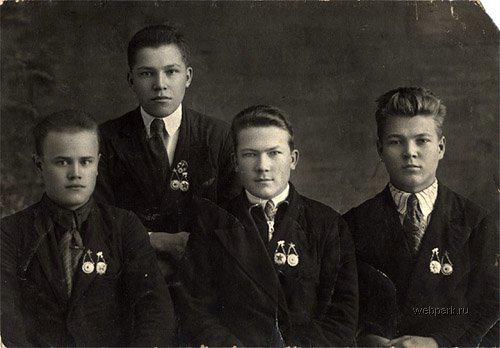
Boys 30s, Kirov region.
Icons - put rules TRP (Ready for Labor and Defense) and GTSO (the same, but the ambulance). In those years, to receive such an icon self-respecting boy was absolutely necessary. Human valued personal qualities, rather than on the wallet and parents relations. Use communication - despised. Such people are in a few years to win the war, to be built almost from scratch a world power, will launch a man into space.
Note collected, strong-willed, adults face these boys - they are approximately 16 years old. And compare them with nyneshnemi.
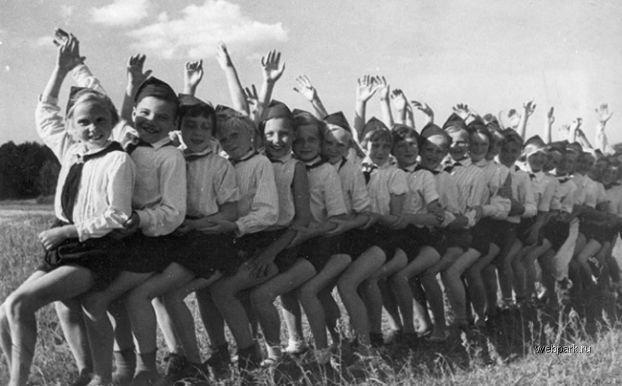
The game "Pioneer benches." Pionerlager 1937 (?)
Every child at virtually no cost could go on all summer to summer camp, where they were educated, trained and trained. In Western countries, still it can not even dream of. And that we were commonplace from the 30th.
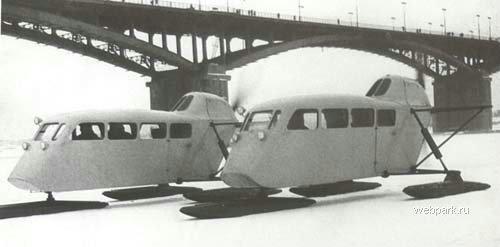
Snowmobiling on ice at the Volga Kanavdinskogo bridge. Mid-30s.
High-tech at the time. They played an important role in working out Aviatechnology and widely used in the development of the North, and the Finnish Patriotic War
1936 Moscow parachute tower view from the embankment. Gorky (main entrance to the Park)
What is not expected? In order to "terrible Stalinist Soviet Union, where there was no sex" in Moscow exhibited a sculpture of a naked woman beautiful? Yes, indeed, she stood "in the terrible 37th." If you think what everyone lived in terror under the total control of sanctimonious tyrannical state, that does not represent and do not understand the time - it has almost nothing to do with his predstavlet rossiyanskih TV and scribble all sorts of scum.
To the society, the time needed not slaves and cowards, but brave, courageous and determined people. A public park was then almost inconceivable without a parachute tower, shooting range and summer stadium. Each city was an airfield, where millions of young people mastered gliders and light aircraft. Raised the will, the courage, bravery
"Hello, Country Heroes Country Dreamers, Country Scholars ...»
Only those able to build a great power. Only in 1935, it was engaged in parachuting more than 800 000 people. In those years, in almost every city, every major park was parachute tower, built them even in large farms.
Parachute tower steel liquidated immediately after Stalin's death. Then it became forbidden to have personal weapons. Parachute tower in the park have been closed about the middle 60s. Not for nothing - with the destruction of the Stalinist system brave brave men began not only not necessary, but dangerous. Already Stalin miracle heroes would not give to hold a "rebuilding».
Incidentally, it was in Stalin's Soviet Union, and many sculptures and paintings of nudes, simply because it never stirred up excitement, turning a person with unstable mentality into a slave to his passions, and it was just a calm and dignified part of the culture.
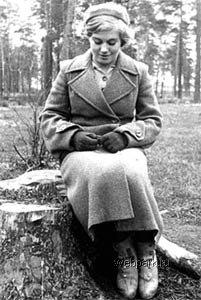
Vera Voloshin, 1 October 1941. Two months later - on November 29, this extremely pretty girl dies.
Eight-meter sculpture Girl with paddle remarkable sculptor Ivan Shadr (Ivanov), the model was a great Soviet athlete Vera Voloshin missing in November 1941 during a commando operations behind enemy lines. A month before her death sculpture destroyed by German bombs. Only a quarter of a century has learned the details of her death - she was seriously injured when he was returning from a mission, captured by the Germans and after much torture hanged in the forest. This occurred 10 kilometers from the place of death of Zoe Kosmodemyanskoy, on the same day. Vera Voloshin, accomplish such a feat was the Komsomol Komsomol reconnaissance and sabotage group, which included Zoe.
Vera was also a great sculptor parachutist and jokingly said that her specially staged to look at the parachute tower.
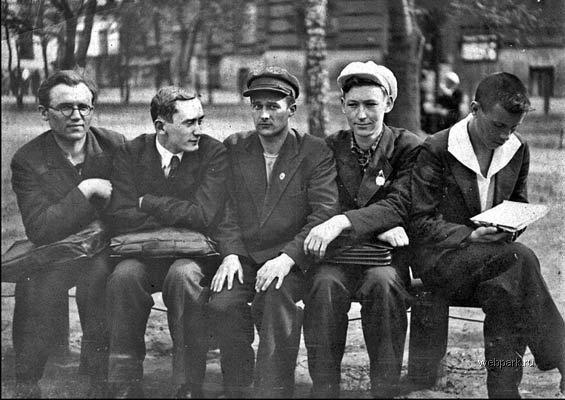
Students-geologists in 1937
Where then went to work these guys? The inscription on the back: In 1940 (after 3 years)
Kaurov - about Nizhneudinsk (Gutara Tagulskoye mica-forwarding), Kolyazhnov, Glushinsky -to Army,
Galushkin - the NKVD, Chuloshnikov -to Mongolia.
By the way, to change the standard of living of the average person - a suit became commonplace.
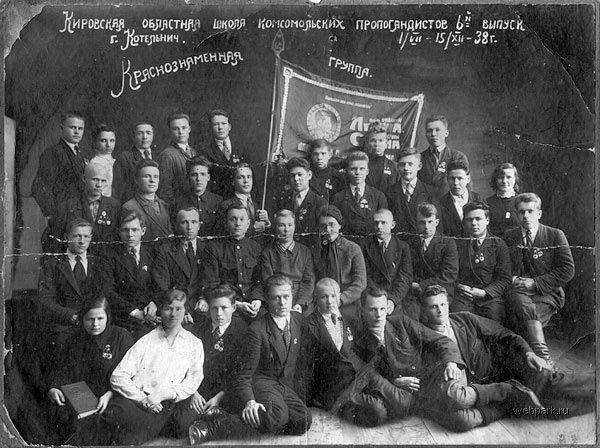
What the picture, it is clear from the inscription at the top. Please note - almost all young men - GTO badges. Being a member of the Komsomol-dystrophic was just crazy. Young Communists and Communists could have a personal weapon.
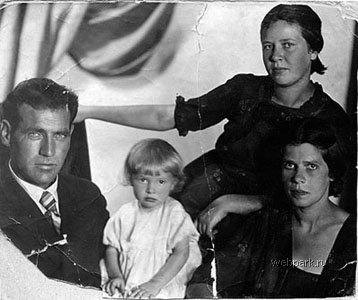
Usual Moscow Family 1939-1940
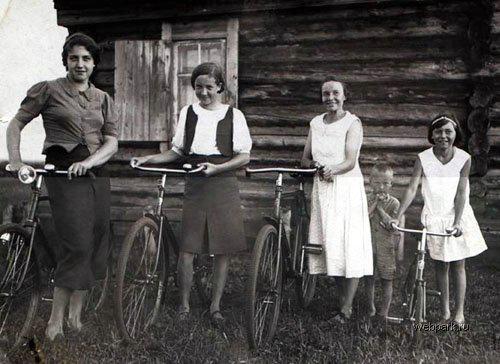
1939. Khakassia. The village
Biking in the Soviet Union became commonplace - it could afford and their children almost everything. In the West, for example, a bicycle in those days could afford not everyone. Then began the five-year consumer goods, performs exceptionally well. The standard of living of the Soviet people has grown rapidly since 1939 ... until June 22, 1941.
War. Look at the bright, focused and sublime face fighters that without words convey that feeling of our people in the war. They will not stick no dirt, which poured on the dregs of our ancestors all grades for 20 years.
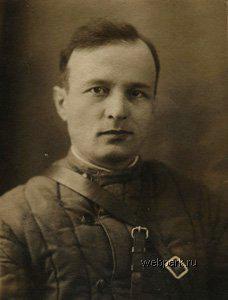
1942, two months later he dies in battle at Vyazma.
Name and author unknown.
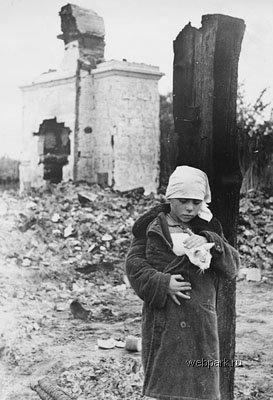
On the ruins of their homes in 1942 (?) Moscow region. (?)
The Soviet Union lost more than 40% of the housing stock. Belarus - about 85%.
The war in several portraits of one person. Taken from the author's website - Filimoshkina Gordeevich Alexander born in 1923, native of the village Agropustyn Solotchinskogo region Ryazan region
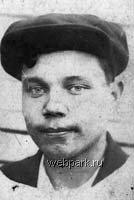
1942. "And wanted to learn ...»
Before leaving for the front as a volunteer.
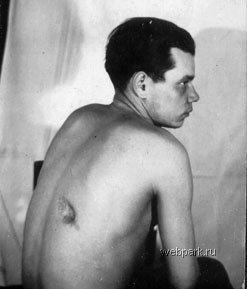
After 2 years. Heavy wound.

3 years later. At the end of the War
Three of the Order of the Red Star at the Soldiers serzhanskogo-ended - it is very rare. They speak for themselves.
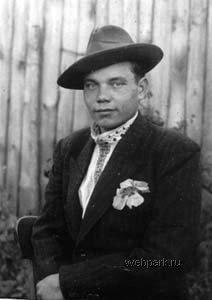
After another two years. 1947 - What will life now!

Winner. "Grandfather Zhuravel MA" 1946
The usual Soviet person.
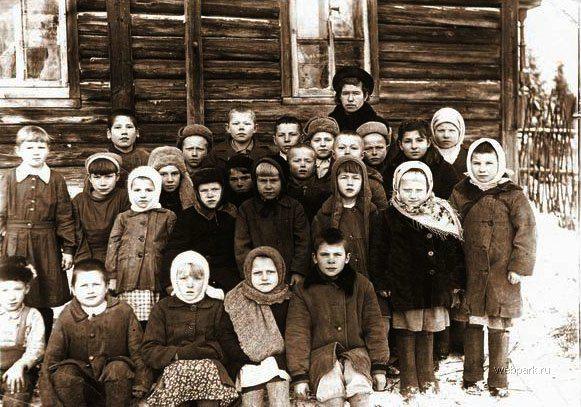
1947. Rural School in the Vologda region.
The photos of the first years after the war even on the children's faces are traces of high stress and hard life. Traces of War can be seen on people's faces and even in the early 50s and then they gradually disappear, and those 10-year-olds no longer be childish adults. Almost all of them were killed or seriously injured someone from loved ones, if not of the family, of my friends, their families, their classmates. Many of them were widowed mother.
I still remember when the 5 year old boy went with his father to the bath in the early '70s, almost all men aged over 45 years were terrible scars - war.
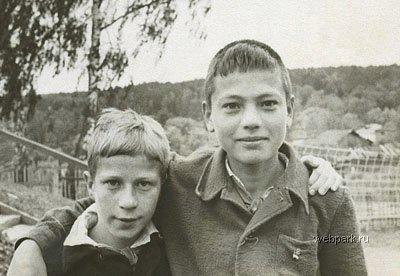
Village boys 1947
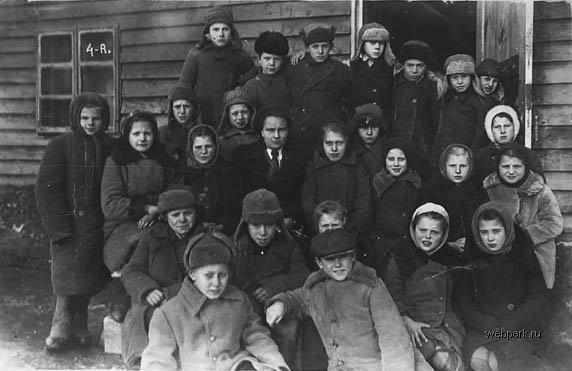
4 "A" class, the end of October 1948, the village near Smolensk.
It seems that many of them 10 and 17 years old ...
That these children against the Anglo-Saxons were preparing plans like "Dropshot" with the destruction of 60% of the population of our country in the first hours of a new war. Against the "nation of widows and the disabled," as they said themselves, hoping for an easy victory. Then they do it is not given.
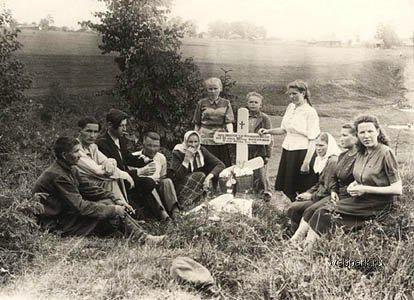
"Trinity, 1949". Kirov region
The last 20 years, "everyone knows" that for religious ceremonies in the USSR were strictly forbidden, and was particularly fierce in times of Stalin's terror. As we are told: put an end to the grave, along the tree - and marching in a column to the Kolyma. And it was like that.

Class of 1950 one of the Moscow schools.

Behind a desk in the office. 1949, Kirov region
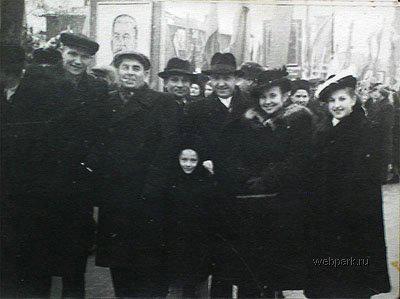
"Scared, exhausted, poor people» ©
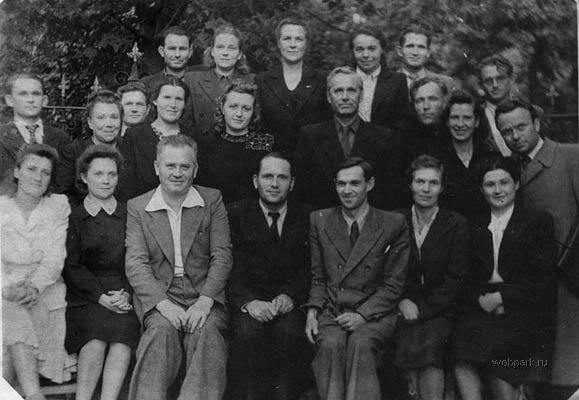
Residents of Kaunas in 1950
"The horrors of the Soviet occupation of the Baltic» ©

Young man. Ufa, 1953
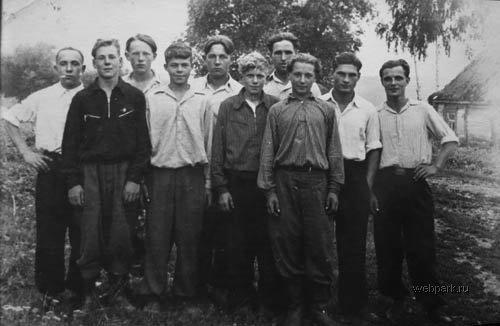
Country lad der. Chupahina Oryol region. 1953
Once the TV said that "zip" appeared in the Soviet Union only in the 60s, so much he fell behind in the consumer goods from the "civilized countries". Meant, "why do we need the space, if the zipper can not do." Apparently, the guy on the left portion of the image removed from the skin of the slain American.
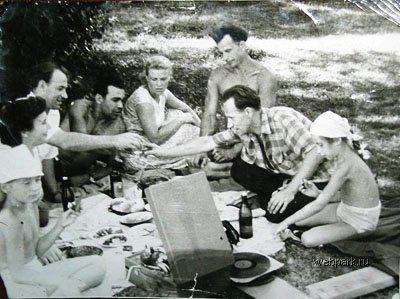
Picnic with a gramophone. Late 50's
It turns out that people were Sovestky with plates and phonographs.
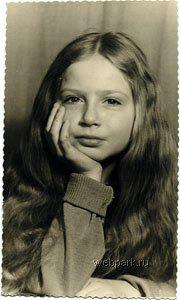
"Nadia" - mid-50s, Moscow
Their faces no longer reflects the war, they are carefree and mischievous. Children who have tried better "fatten up" in the '50s after the hungry war years.

Riga-50s.
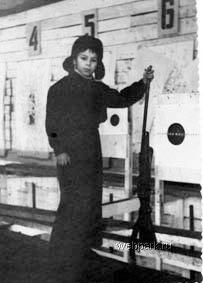
In Dash society "Dynamo" in 1955
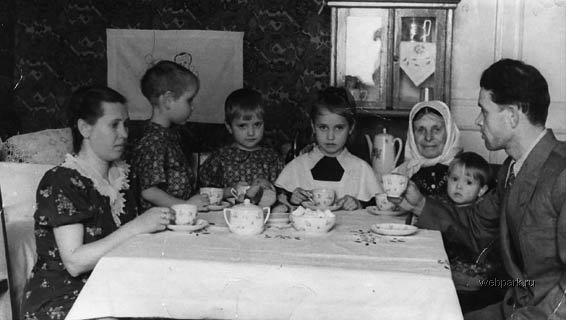
In the new apartment. Personnel working factory "Red October" Shubin AI Moscow, Tushino, 1956.
Family with four children did not have any particular problems for them was a wonderful kindergarten, virtually free, and a great school, and medicine, and if necessary - Institute.

Guys, Kolomna, 1958.
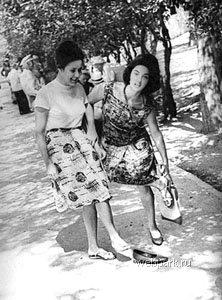
Baku, walk to tire. 1959 Author - Jawad Bagirov
Now we are told that the man in the Soviet Union could not be decently dressed.
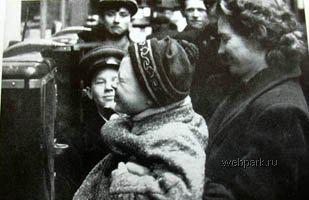
Apparatus for selling perfume and cologne. 50th
With the '50s "pshiknut" the perfume or cologne could be in big stores. It cost 15 cents, to "Khrushchev's reforms».
A source
This is not the work of professional photographers who can try to blame the fact that they are one-sided. These are photos from private albums - real life who lived ordinary Soviet people, the average 20-x - 50-ies.
What is not expected? In order to "terrible Stalinist Soviet Union, where there was no sex" in Moscow exhibited a sculpture of a naked woman beautiful? Yes, indeed, she stood "in the terrible 37th." If you think what everyone lived in terror under the total control of sanctimonious tyrannical state, that does not represent and do not understand the time - it has almost nothing to do with his predstavlet rossiyanskih TV and scribble all sorts of scum. Of course, the pictures of the album can not be compared with the level of works of professional photographers, most of them were made by amateurs. But they reflect life as they saw it and those people were able to save part in family photographs.
Behind the scenes there are very many. For example, the campaign against illiteracy which was taught to read and write 80% of the illiterate population of the country - where the peasants of those years Cameras? But it's not that. Look at what surrounds those years the Soviet people, clothes, face, reflecting his time. Sometimes they will say about his time better than any of historians, educators and analysts.

Kids mid-20s
School textbooks - the first time in my life. Education for all the world's first furnished the Soviet regime.

1926 Cherepovets. The celebration of May 1
Next to the podium homeless - Civil consequences. Homelessness is eliminated only to the beginning of the 30's.

1928. Krasnoyarsk region. The Congress party workers.
See how dressed up party workers - as well as the average person mes years. In the 20's costume was not all. And ordinary party workers had 2 shirt wardrobe, and even one.

Family celebrations, 20-30th

Photo of a woman. 1930 Moscow

The car on the wood (!) Motor Rally 1931
Enthusiasts konstrutory-30s. With oil in the Soviet Union when it was not very good - almost all the proven reserves were concentrated in the Caucasus. The oil fields of Tatarstan and Siberia were discovered only in the 40's - 50's, when it created the basis for geological surveys. Before that, the country lacked geologists, equipment, engineers, transportation ... there was almost nothing. All this was created in the 30s.

1931 Best team in the construction of the Kuznetsk metaluricheskogo plant, Novokuznetsk
Mortgaging base of heavy industry. And there is no lie that its "cons built in 37" - it has already been built a long time by then, and the contribution of prison labor in the economy in those years is less than 1%.
Now this plant "privatized", that is stolen from the people of obscure personalities. Recently, "Governor" Tuleyev said that the plant "finally appeared boss" - a group of obscure nominees. Now combine Finally, you can control with a host. It is terrible to imagine how it could build if no owner, is not something that control.
To do this, that, if it was built by our grandfathers to be stolen every scum?
Look no faces of these people. They did not spare himself, built factories and cities for their descendants, for us. After 10 years, they have made will protect them in the most terrible war in human history, dying in order to live we. And we are all allowed to steal and destroy. Could we look into their eyes?

A family. Leningrad 1930-31g.
Intellectuals and experts in those years very well earned.

Rest on the water. Kirov region. 1932 - 1936

Agricultural workers remote Siberian province. Artel - a non-governmental organization, united and cooperative entrepreneurs who themselves entered into a contract with the state and other cooperatives, paying taxes, etc.
The one that says that the Soviet Union in those years was a super-centralized state, where everything is strictly regulated from the center - do not know the history or understand the structure of society of those years, or deliberately lying.
The cooperative movement was extremely developed in Stalin's Soviet Union. In addition to the collective farms, which have been co-operative organizations, while there were more than 114 000 industrial workshops, where about 2 million people. They made almost 6% of the gross industrial output of the Soviet Union in its composition: 40% of all furniture of the country, 70% of all metal utensils, 35% of the top jersey, almost 100% of the toys.
In rural cooperatives cooperative workers (both farmers and individual farmers) were usually employed part. They included the 30 years up to 30 million people.
The cooperative movement in the Soviet Union was destroyed during Khrushchev simultaneously with the deployment of anti-Stalin hysteria.

"After the Bath" Mid-30s.
"Scared the Soviet people. »© Look, is there any fear in these faces? In any of the photographs. Open, bright and optimistic person.

Farmers. Kirov region between 1932 and 1936
Ordinary Soviet farmers haymaking.

1935 Orel region, Holiday House "Bogdanovsky».
The whole country is involved in sports. This is a Soviet girl, not the national team in gymnastics. Try to repeat what they are doing.
1935, for ordinary people across the country opened a holiday home. Can you imagine it with the king and the "great Stolypin»?

Students pedtehnikuma, 1935, Kirov region
The shape of the disciples betrayed the Soviet state. It is a country that a few years ago went to sandals and did not know how to read and write.

Boys 30s, Kirov region.
Icons - put rules TRP (Ready for Labor and Defense) and GTSO (the same, but the ambulance). In those years, to receive such an icon self-respecting boy was absolutely necessary. Human valued personal qualities, rather than on the wallet and parents relations. Use communication - despised. Such people are in a few years to win the war, to be built almost from scratch a world power, will launch a man into space.
Note collected, strong-willed, adults face these boys - they are approximately 16 years old. And compare them with nyneshnemi.

The game "Pioneer benches." Pionerlager 1937 (?)
Every child at virtually no cost could go on all summer to summer camp, where they were educated, trained and trained. In Western countries, still it can not even dream of. And that we were commonplace from the 30th.

Snowmobiling on ice at the Volga Kanavdinskogo bridge. Mid-30s.
High-tech at the time. They played an important role in working out Aviatechnology and widely used in the development of the North, and the Finnish Patriotic War
1936 Moscow parachute tower view from the embankment. Gorky (main entrance to the Park)
What is not expected? In order to "terrible Stalinist Soviet Union, where there was no sex" in Moscow exhibited a sculpture of a naked woman beautiful? Yes, indeed, she stood "in the terrible 37th." If you think what everyone lived in terror under the total control of sanctimonious tyrannical state, that does not represent and do not understand the time - it has almost nothing to do with his predstavlet rossiyanskih TV and scribble all sorts of scum.
To the society, the time needed not slaves and cowards, but brave, courageous and determined people. A public park was then almost inconceivable without a parachute tower, shooting range and summer stadium. Each city was an airfield, where millions of young people mastered gliders and light aircraft. Raised the will, the courage, bravery
"Hello, Country Heroes Country Dreamers, Country Scholars ...»
Only those able to build a great power. Only in 1935, it was engaged in parachuting more than 800 000 people. In those years, in almost every city, every major park was parachute tower, built them even in large farms.
Parachute tower steel liquidated immediately after Stalin's death. Then it became forbidden to have personal weapons. Parachute tower in the park have been closed about the middle 60s. Not for nothing - with the destruction of the Stalinist system brave brave men began not only not necessary, but dangerous. Already Stalin miracle heroes would not give to hold a "rebuilding».
Incidentally, it was in Stalin's Soviet Union, and many sculptures and paintings of nudes, simply because it never stirred up excitement, turning a person with unstable mentality into a slave to his passions, and it was just a calm and dignified part of the culture.

Vera Voloshin, 1 October 1941. Two months later - on November 29, this extremely pretty girl dies.
Eight-meter sculpture Girl with paddle remarkable sculptor Ivan Shadr (Ivanov), the model was a great Soviet athlete Vera Voloshin missing in November 1941 during a commando operations behind enemy lines. A month before her death sculpture destroyed by German bombs. Only a quarter of a century has learned the details of her death - she was seriously injured when he was returning from a mission, captured by the Germans and after much torture hanged in the forest. This occurred 10 kilometers from the place of death of Zoe Kosmodemyanskoy, on the same day. Vera Voloshin, accomplish such a feat was the Komsomol Komsomol reconnaissance and sabotage group, which included Zoe.
Vera was also a great sculptor parachutist and jokingly said that her specially staged to look at the parachute tower.

Students-geologists in 1937
Where then went to work these guys? The inscription on the back: In 1940 (after 3 years)
Kaurov - about Nizhneudinsk (Gutara Tagulskoye mica-forwarding), Kolyazhnov, Glushinsky -to Army,
Galushkin - the NKVD, Chuloshnikov -to Mongolia.
By the way, to change the standard of living of the average person - a suit became commonplace.

What the picture, it is clear from the inscription at the top. Please note - almost all young men - GTO badges. Being a member of the Komsomol-dystrophic was just crazy. Young Communists and Communists could have a personal weapon.

Usual Moscow Family 1939-1940

1939. Khakassia. The village
Biking in the Soviet Union became commonplace - it could afford and their children almost everything. In the West, for example, a bicycle in those days could afford not everyone. Then began the five-year consumer goods, performs exceptionally well. The standard of living of the Soviet people has grown rapidly since 1939 ... until June 22, 1941.
War. Look at the bright, focused and sublime face fighters that without words convey that feeling of our people in the war. They will not stick no dirt, which poured on the dregs of our ancestors all grades for 20 years.

1942, two months later he dies in battle at Vyazma.
Name and author unknown.

On the ruins of their homes in 1942 (?) Moscow region. (?)
The Soviet Union lost more than 40% of the housing stock. Belarus - about 85%.
The war in several portraits of one person. Taken from the author's website - Filimoshkina Gordeevich Alexander born in 1923, native of the village Agropustyn Solotchinskogo region Ryazan region

1942. "And wanted to learn ...»
Before leaving for the front as a volunteer.

After 2 years. Heavy wound.

3 years later. At the end of the War
Three of the Order of the Red Star at the Soldiers serzhanskogo-ended - it is very rare. They speak for themselves.

After another two years. 1947 - What will life now!

Winner. "Grandfather Zhuravel MA" 1946
The usual Soviet person.

1947. Rural School in the Vologda region.
The photos of the first years after the war even on the children's faces are traces of high stress and hard life. Traces of War can be seen on people's faces and even in the early 50s and then they gradually disappear, and those 10-year-olds no longer be childish adults. Almost all of them were killed or seriously injured someone from loved ones, if not of the family, of my friends, their families, their classmates. Many of them were widowed mother.
I still remember when the 5 year old boy went with his father to the bath in the early '70s, almost all men aged over 45 years were terrible scars - war.

Village boys 1947

4 "A" class, the end of October 1948, the village near Smolensk.
It seems that many of them 10 and 17 years old ...
That these children against the Anglo-Saxons were preparing plans like "Dropshot" with the destruction of 60% of the population of our country in the first hours of a new war. Against the "nation of widows and the disabled," as they said themselves, hoping for an easy victory. Then they do it is not given.

"Trinity, 1949". Kirov region
The last 20 years, "everyone knows" that for religious ceremonies in the USSR were strictly forbidden, and was particularly fierce in times of Stalin's terror. As we are told: put an end to the grave, along the tree - and marching in a column to the Kolyma. And it was like that.

Class of 1950 one of the Moscow schools.

Behind a desk in the office. 1949, Kirov region

"Scared, exhausted, poor people» ©

Residents of Kaunas in 1950
"The horrors of the Soviet occupation of the Baltic» ©

Young man. Ufa, 1953

Country lad der. Chupahina Oryol region. 1953
Once the TV said that "zip" appeared in the Soviet Union only in the 60s, so much he fell behind in the consumer goods from the "civilized countries". Meant, "why do we need the space, if the zipper can not do." Apparently, the guy on the left portion of the image removed from the skin of the slain American.

Picnic with a gramophone. Late 50's
It turns out that people were Sovestky with plates and phonographs.

"Nadia" - mid-50s, Moscow
Their faces no longer reflects the war, they are carefree and mischievous. Children who have tried better "fatten up" in the '50s after the hungry war years.

Riga-50s.

In Dash society "Dynamo" in 1955

In the new apartment. Personnel working factory "Red October" Shubin AI Moscow, Tushino, 1956.
Family with four children did not have any particular problems for them was a wonderful kindergarten, virtually free, and a great school, and medicine, and if necessary - Institute.

Guys, Kolomna, 1958.

Baku, walk to tire. 1959 Author - Jawad Bagirov
Now we are told that the man in the Soviet Union could not be decently dressed.

Apparatus for selling perfume and cologne. 50th
With the '50s "pshiknut" the perfume or cologne could be in big stores. It cost 15 cents, to "Khrushchev's reforms».
A source



